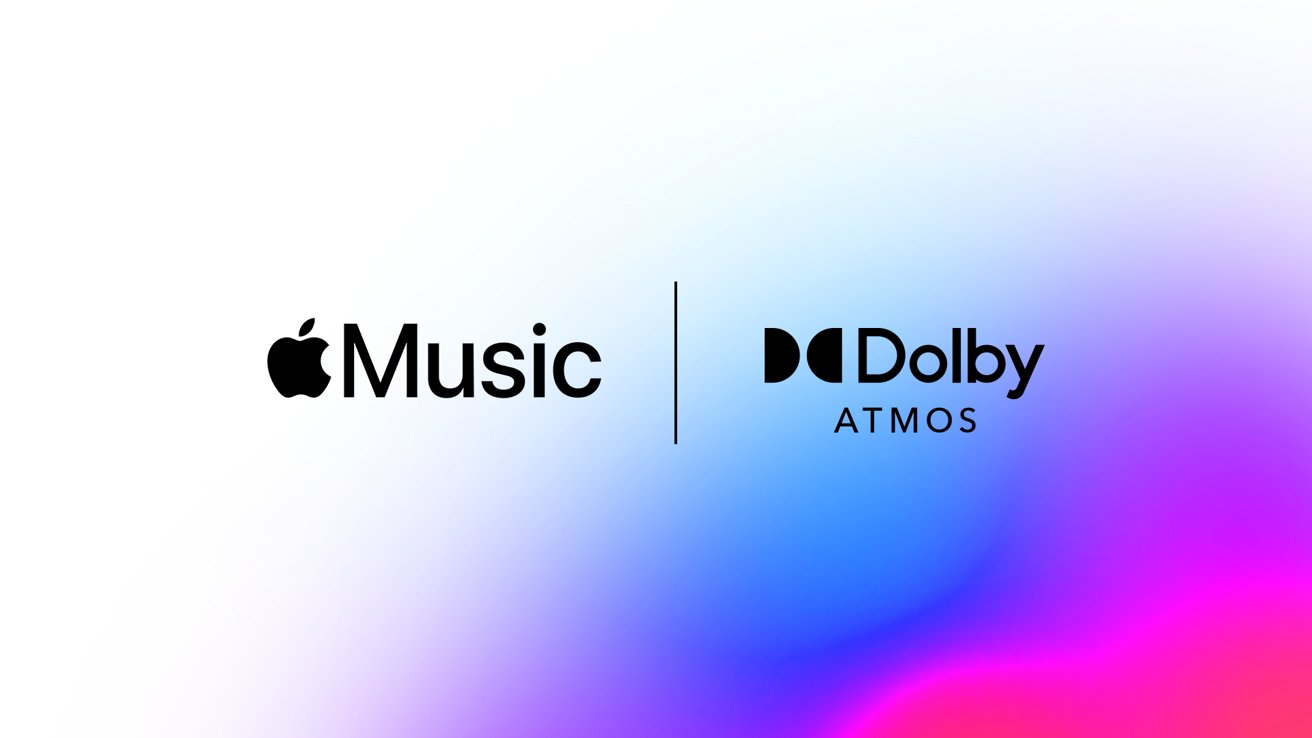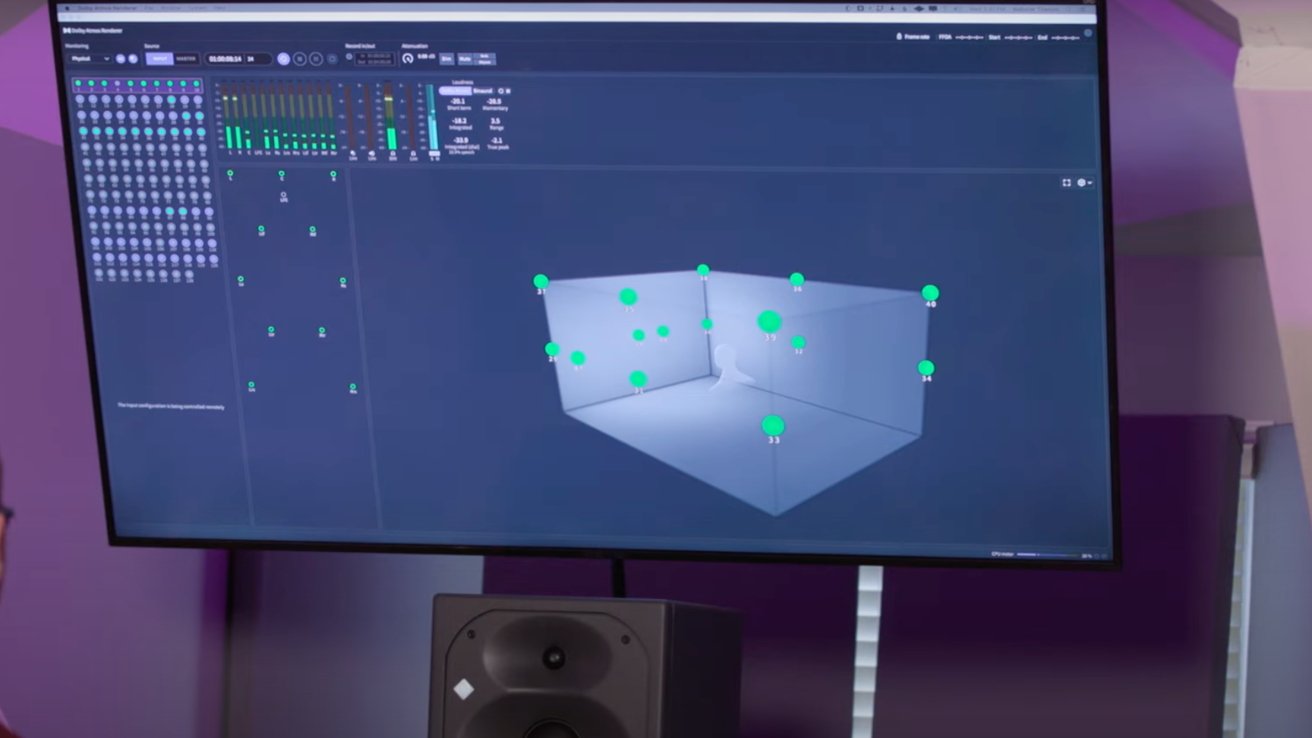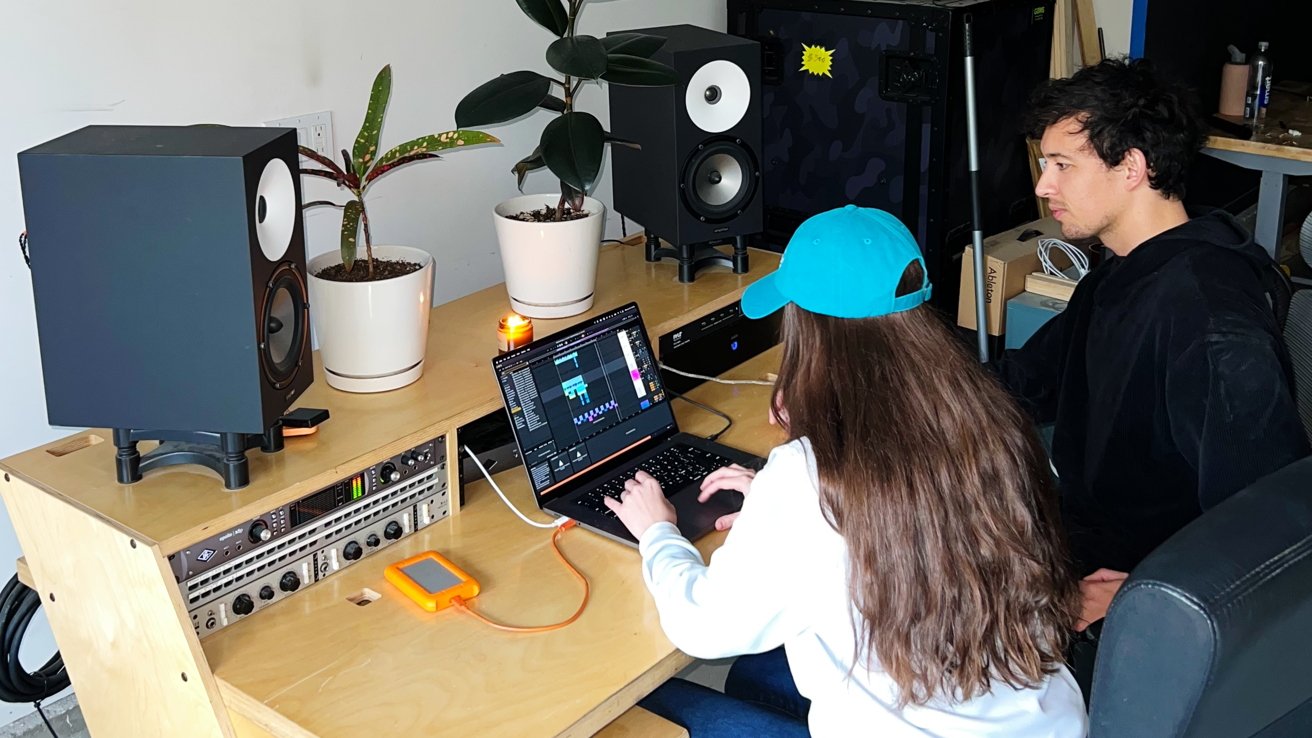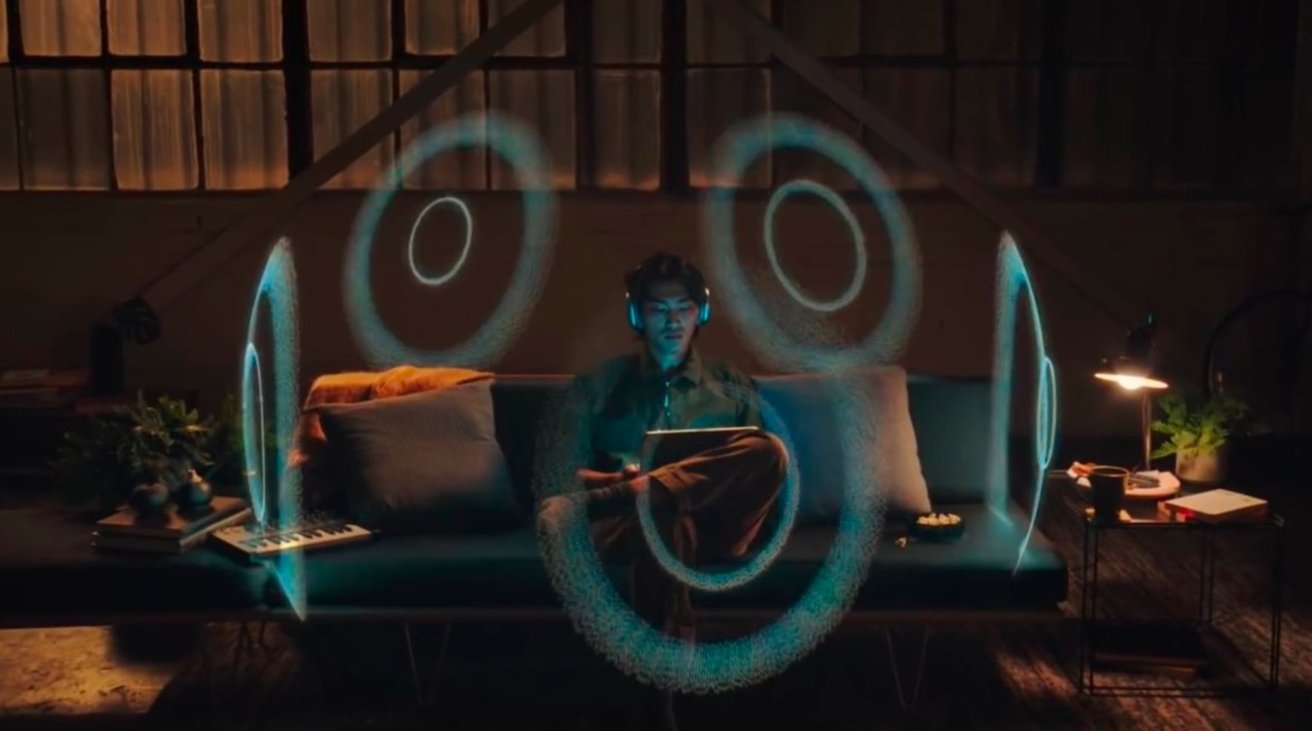Why Spatial Audio is the future of the music industry, even if you hate it
It doesn't matter if Spatial Audio with Dolby Atmos is good, because it's already the future of Apple Music and the larger music industry, for better or worse. Let us explain.

Apple Music with Dolby Atmos
Apple announced Spatial Audio as part of Apple Music in May 2021. In less than two years, the company is already celebrating its success as part of a special press release.
In it, Eddy Cue said, "Since launch, the number of monthly Spatial Audio listeners has more than tripled, with more than 80 percent of worldwide subscribers enjoying the experience, while monthly plays in Spatial Audio have grown by over 1,000 percent."
The increase in listeners probably has to do with how much Apple is enabling the audio format across its devices.
Built-in speakers on the iPhone dating back to the XS all automatically support Spatial Audio with Dolby Atmos. AirPods, modern Beats headphones, and even all Bluetooth headphones (that the iPhone knows are headphones).
Wired headphones support the feature too if Spatial Audio is explicitly turned on in the settings, rather than set to "automatic."
Apple is all in on Spatial Audio. So much so that it bundled it with lossless audio and gave it away to subscribers for no additional cost -- despite Apple paying more in royalty fees for those audio formats.
In the Rolling Stone interview, Martin called out the first Spatial Audio mix as not being quite right. "I'm gonna go back to the theatrical mix and make it into what's called near-field Dolby Atmos, as opposed to the cinema Dolby Atmos."
Overall, despite the changes he thought were needed, Martin came across as optimistic about the new listening experience and its future.
"I think we're right at the beginning of this. And I think what it can do is it can create intimacy with music. You can hear the difference with spatial audio. It may not always be better, but there's a difference."
Nearly two years later, all major label releases on Apple Music have a Spatial Audio mix available. Better yet, older releases continue to be released weekly and highlighted in the app.

Mixing for Dolby Atmos
The audio format is growing and expanding, but it has yet to spread as widely as lossless has. Mostly, that's due to the associated costs to produce spatial mixes.
As an example, the Dolby Atmos Production Suite costs $299. The Dolby Atmos Mastering Suite costs around $1,000. There may be other costs depending on the recording setup.
Overall though, the more significant expense comes from building out a Dolby-recommended 7.1.4 monitoring system.
That would be seven surround speakers, one subwoofer, and four overhead speakers. The Production Suite will support up to 22 speakers, however, if someone is so inclined.
Once these costs come down in some way, we should see even wider adaption.

Lyrah and Ciel Eckard-Lee
She explained, "There are two reasons I don't have my songs mixed in spatial audio. The cost and my audience base mainly being on Spotify, which doesn't offer a spatial listening experience."
"Longterm I'd love to, but because I try to keep my production costs as low as possible, it doesn't make sense right now," she said. "I'd probably invest more in my live show experience before I would a spatial audio listening experience."
Ciel Eckard-Lee, a mixing/mastering engineer and collaborator with Lyrah, added, "Spatial audio can provide an incredibly emotional experience in the right context, but most consumers don't have the playback system to actually be immersed."
"While Apple's headphones do a good job of approximating spatialization, they're not able to fully replicate being within a speaker array, and it mostly seems like a marketing tactic to sell more headphones and differentiate Apple Music," he said.
"I also think that not all kinds of music adapt well to spatial since so much of the mixing and production sounds we've come to love have been developed for stereo," Eckard-Lee said. "With the right listening environment and production, it can be awesome, but what's available to the average consumer hasn't been that compelling so far."
Amazon Music Unlimited offers a catalog of "thousands" of Spatial Audio songs mastered in Dolby Atmos and Sony 360 Reality Audio. Tidal, as part of its $19.99 a month HiFi Plus tier, offers access to Dolby Atmos and Sony 360 Reality Audio spatial mixes.
As of January 19, 2023, Spotify doesn't offer lossless or spatial audio songs on its streaming service.
It doesn't really matter that Dolby Atmos for music is not the same thing -- including the detail that cinema releases need to be mixed and mastered at a Dolby Certified studio, while music releases do not.
Dolby Atmos is simply coming to be associated with better audio, even if consumers can't quite articulate what that is.

Virtual surround sound
Apple has likely spent a lot of time and money investing in it because it's important for virtual reality where you need to hear sounds in a 360-degree space.
But mostly, it's a differentiator for Apple Music that customers aren't pushing back against.
Anecdotally, Apple Music subscribers seem indifferent to the feature, if anything. It's bundled in their monthly cost and Apple is eating any increased fees associated with licensing these songs.
Lossless audio has been a hard sell because a lot of listeners can distinguish the higher quality past a certain threshold -- and plenty of people don't care enough to try.
Spatial Audio does offer a more practical and potentially tangible marketing angle. That's why it's the future, for Apple, Amazon, Sony, Tidal, Dolby, and a plethora of other companies in the music industry.
Read on AppleInsider

Apple Music with Dolby Atmos
Apple announced Spatial Audio as part of Apple Music in May 2021. In less than two years, the company is already celebrating its success as part of a special press release.
In it, Eddy Cue said, "Since launch, the number of monthly Spatial Audio listeners has more than tripled, with more than 80 percent of worldwide subscribers enjoying the experience, while monthly plays in Spatial Audio have grown by over 1,000 percent."
The increase in listeners probably has to do with how much Apple is enabling the audio format across its devices.
Built-in speakers on the iPhone dating back to the XS all automatically support Spatial Audio with Dolby Atmos. AirPods, modern Beats headphones, and even all Bluetooth headphones (that the iPhone knows are headphones).
Wired headphones support the feature too if Spatial Audio is explicitly turned on in the settings, rather than set to "automatic."
Apple is all in on Spatial Audio. So much so that it bundled it with lossless audio and gave it away to subscribers for no additional cost -- despite Apple paying more in royalty fees for those audio formats.
Spatial Audio in the music industry
In July 2021, after Spatial Audio rolled out, Beatles' producer Giles Martin commented on the technology as well as the production and sound of the "Sgt. Pepper's Lonely Hearts Club Band" album.In the Rolling Stone interview, Martin called out the first Spatial Audio mix as not being quite right. "I'm gonna go back to the theatrical mix and make it into what's called near-field Dolby Atmos, as opposed to the cinema Dolby Atmos."
Overall, despite the changes he thought were needed, Martin came across as optimistic about the new listening experience and its future.
"I think we're right at the beginning of this. And I think what it can do is it can create intimacy with music. You can hear the difference with spatial audio. It may not always be better, but there's a difference."
Nearly two years later, all major label releases on Apple Music have a Spatial Audio mix available. Better yet, older releases continue to be released weekly and highlighted in the app.

Mixing for Dolby Atmos
The audio format is growing and expanding, but it has yet to spread as widely as lossless has. Mostly, that's due to the associated costs to produce spatial mixes.
As an example, the Dolby Atmos Production Suite costs $299. The Dolby Atmos Mastering Suite costs around $1,000. There may be other costs depending on the recording setup.
Overall though, the more significant expense comes from building out a Dolby-recommended 7.1.4 monitoring system.
That would be seven surround speakers, one subwoofer, and four overhead speakers. The Production Suite will support up to 22 speakers, however, if someone is so inclined.
Once these costs come down in some way, we should see even wider adaption.
The independent side
As a point, Lyrah is a musical artist who gets more than 250,000 monthly listeners on Spotify and has made the choice not to invest in Spatial Audio yet.
Lyrah and Ciel Eckard-Lee
She explained, "There are two reasons I don't have my songs mixed in spatial audio. The cost and my audience base mainly being on Spotify, which doesn't offer a spatial listening experience."
"Longterm I'd love to, but because I try to keep my production costs as low as possible, it doesn't make sense right now," she said. "I'd probably invest more in my live show experience before I would a spatial audio listening experience."
Ciel Eckard-Lee, a mixing/mastering engineer and collaborator with Lyrah, added, "Spatial audio can provide an incredibly emotional experience in the right context, but most consumers don't have the playback system to actually be immersed."
"While Apple's headphones do a good job of approximating spatialization, they're not able to fully replicate being within a speaker array, and it mostly seems like a marketing tactic to sell more headphones and differentiate Apple Music," he said.
"I also think that not all kinds of music adapt well to spatial since so much of the mixing and production sounds we've come to love have been developed for stereo," Eckard-Lee said. "With the right listening environment and production, it can be awesome, but what's available to the average consumer hasn't been that compelling so far."
Other spatial audio
Although Apple is certainly pushing the hardest on the Spatial Audio front, it's not the only one.Amazon Music Unlimited offers a catalog of "thousands" of Spatial Audio songs mastered in Dolby Atmos and Sony 360 Reality Audio. Tidal, as part of its $19.99 a month HiFi Plus tier, offers access to Dolby Atmos and Sony 360 Reality Audio spatial mixes.
As of January 19, 2023, Spotify doesn't offer lossless or spatial audio songs on its streaming service.
Dolby Atmos across other entertainment
Stepping back from Spatial Audio music, the larger picture might be the prevalence of Dolby Atmos in movies and TV shows. Consumers are being trained to associate this Dolby branding with immersive and spatial audio content.It doesn't really matter that Dolby Atmos for music is not the same thing -- including the detail that cinema releases need to be mixed and mastered at a Dolby Certified studio, while music releases do not.
Dolby Atmos is simply coming to be associated with better audio, even if consumers can't quite articulate what that is.
Spatial Audio is the future of music
We're far enough down this Spatial Audio road that it doesn't look like it'll be abandoned any time soon.
Virtual surround sound
Apple has likely spent a lot of time and money investing in it because it's important for virtual reality where you need to hear sounds in a 360-degree space.
But mostly, it's a differentiator for Apple Music that customers aren't pushing back against.
Anecdotally, Apple Music subscribers seem indifferent to the feature, if anything. It's bundled in their monthly cost and Apple is eating any increased fees associated with licensing these songs.
Lossless audio has been a hard sell because a lot of listeners can distinguish the higher quality past a certain threshold -- and plenty of people don't care enough to try.
Spatial Audio does offer a more practical and potentially tangible marketing angle. That's why it's the future, for Apple, Amazon, Sony, Tidal, Dolby, and a plethora of other companies in the music industry.
Read on AppleInsider

Comments
Improvements have primarily come in car stereos and headphones, in terms of the average person having a better experience. I’ve tried Spatial Audio a few times, but find it more annoying than beneficial. I suppose like 3D movies or even real surround sound, there is certain content/context where it is nice, or at least a quick thrill.
this goes for “lossless” as well, if the recording is poorly done then you will get poor playback in “lossless” quality.
unless it is done right at the start, it is just garbage in, garbage out.
How about... because neither Apple nor Beats makes headphones or earpods that can playback Apple lossless audio. Even AirPods Max in wired mode can't play lossless. Nor can you tap into lossless audio via the iPhone's Lightning port. Also: the kind of high quality playback systems where you are most likely to hear the differences between lossless and AAC are generally not AirPlay 2 compatible.
Aside from an audiophiles and a few higher-end consumer products, lossless audio is becoming more and more irrelevant. Almost no one could tell the difference anyway, and hearing capabilities aside, the number of systems anyone could tell the difference on is shrinking.
Should be "can't."
For AR/VR it's pretty essential.
For listening to popular music in various ways, it will probably be as successful as "Quad" was in the '70's.
FWIW...I installed dozens of Atmos system at Dolby HQ. They sound fantastic.
They are also installed in rooms there to varying degrees of acoustic engineering.
The price of the speaker systems ran from about $5,000 to over $100,000.
A good Atmos system sounds great, but is not a simple matter.
While I'm here..
AAC+ encoding sounds fine for most material. Lossless doesn't help 16/44.1 very much.
For a step up, 24 bit helps decent recordings. Going from 44.1KHz to 88.2 or 96KHz can improve recordings with lots of HF transients and wide dynamics.
Both of those things are incumbent on a very nice monitoring system, and good room acoustics. Or a pricey set of cans.
BTW...You can successfully compress 24/88 files with ALAC, to keep the file size reasonable.